Azure Devops Merge Master Into Branch
Tracking Changes in the Master Branch
Before we delve into the specifics of merging master into a branch, it is important to understand the significance of the master branch in version control systems. The master branch is typically considered the main or default branch in a repository. It represents the stable version of the codebase and is often used as the base for creating new branches.
Tracking changes made in the master branch is crucial for several reasons. Firstly, it allows developers to keep a record of all modifications made to the codebase. This provides a historical context and helps in identifying the root cause of issues or bugs. Secondly, tracking changes in the master branch helps ensure that the software project remains up to date with the latest features, enhancements, and bug fixes.
Utilizing Azure DevOps to monitor modifications in the master branch is an effective way to streamline this process. Azure DevOps provides a comprehensive set of tools and features for version control, including the ability to track and visualize changes in the master branch.
Reasons for Merging Master into Branch
There are several reasons why merging the master branch into a branch is essential in the Azure DevOps workflow. Firstly, merging master into a branch helps synchronize the branch with the latest changes in the master branch. This ensures that the branch stays up to date with the current state of the codebase.
Secondly, merging the master branch into a branch ensures that the branch incorporates all the up-to-date features and bug fixes from the master branch. This helps improve code quality and avoids any inconsistencies or discrepancies between different branches.
Lastly, regularly merging the master branch into a branch helps avoid conflicts and inconsistencies. By merging frequently, developers can identify and resolve any conflicts or inconsistencies early on, minimizing the chances of encountering major issues during the development process.
Preparing the Branch for the Merge
Before initiating the merge process, it is important to review the branch’s current state and identify any potential conflicts with the master branch. This involves examining the changes made in both branches and understanding the impact of merging them together.
If conflicts or inconsistencies exist, they need to be resolved before initiating the merge. This can be done by either manually resolving conflicts or leveraging automated tools provided by Azure DevOps, such as visual studio code or smartgit.
Furthermore, ensuring that the branch is up to date with the latest changes from other sources is crucial. This includes pulling any changes from remote repositories or branches to ensure that the branch is in sync with the latest codebase.
Performing the Merge
Once the branch is prepared, the merge process can be initiated through Azure DevOps. This can be done by creating a pull request or using the built-in merge functionality.
During the merge process, conflicts may arise if there are conflicting changes in both branches. Resolving these conflicts requires a careful review of the conflicting code and determining the best approach to merge them together. Azure DevOps provides tools and features to help visualize and resolve conflicts efficiently.
Verifying the successful merge is essential before proceeding further. This involves testing the merged branch to ensure its stability and functionality. Comprehensive unit tests should be executed to identify any issues or failures. If any issues are encountered, they should be addressed promptly to refine the merged branch until it meets the desired quality standards.
Reviewing and Approving the Merged Changes
Conducting a thorough code review is an important step to validate the merged changes in the branch. This involves reviewing the code for quality, readability, and adherence to coding standards. Collaborating with relevant team members or stakeholders to provide feedback and suggestions for improvement can help ensure that the merged changes meet the project’s requirements.
Necessary approvals should be obtained before proceeding with the merged changes. This ensures that all stakeholders are aware of and approve the changes made to the codebase. Azure DevOps provides features for managing and tracking approvals for merged changes.
Deploying the Merged Branch
If applicable, the merged branch needs to be prepared for production deployment. This involves coordinating with the deployment team to ensure a seamless transition of the merged changes into the production environment. Azure DevOps offers capabilities for managing the deployment process effectively.
Monitoring the deployed changes post-deployment is crucial to identify any unforeseen issues. This involves actively monitoring the system and gathering feedback from users to address any potential issues or bugs that may arise.
Documenting the Merged Changes
Updating relevant documentation is necessary to reflect the merged changes and their impact. This ensures that all developers and stakeholders are aware of the modifications made to the codebase and can understand the changes effectively. Recording specific instructions or considerations pertaining to the merged branch provides valuable information for future reference.
Collaboration and Communication
Throughout the merge process, encouraging open communication and collaboration between team members is crucial. This ensures that everyone is on the same page and can address any challenges or concerns effectively. Sharing regular updates and progress reports with stakeholders keeps them informed and involved in the development process.
FAQs
Q: How can I merge the master branch into a branch using Visual Studio Code?
A: To merge the master branch into a branch using Visual Studio Code, you can follow these steps:
1. Open the branch you want to merge into in Visual Studio Code.
2. Open the source control view and switch to the “Branches” tab.
3. Right-click on the master branch and select “Merge into current branch.”
4. Resolve any conflicts that may arise during the merge process.
5. Once the merge is complete, commit the changes to finalize the merge.
Q: Can I merge the master branch into a branch without creating a pull request in Azure DevOps?
A: Yes, it is possible to merge the master branch into a branch without creating a pull request in Azure DevOps. This can be done using the built-in merge functionality. However, it is generally recommended to create a pull request to facilitate code review and collaboration with team members before merging.
Q: How can I merge a branch into another branch in Azure DevOps?
A: To merge a branch into another branch in Azure DevOps, you can follow these steps:
1. Open the target branch you want to merge into.
2. Click on the “Code” tab and select “Files.”
3. Navigate to the branch you want to merge and click on the “Merge” button.
4. Resolve any conflicts that may arise during the merge process.
5. Once the merge is complete, commit the changes to finalize the merge.
In conclusion, merging the master branch into a branch plays a crucial role in maintaining code consistency and incorporating the latest changes from the master branch. Azure DevOps provides a robust set of tools and features to streamline the merge process and ensure the successful integration of changes. By following the steps outlined in this article, developers can effectively merge master into branch and create a cohesive and up-to-date codebase.
Azure Devops – Pull Requests \U0026 Merging Feature Branches
Can You Merge Master Into Branch?
When working with version control systems like Git, it is common to have multiple branches in a project. Branches allow you to work on new features or bug fixes independently from the main codebase, which is typically maintained in the ‘master’ branch. At some point, you may find the need to merge changes from the ‘master’ branch into your feature branch. But can you merge the ‘master’ branch into another branch? Let’s explore this topic in depth.
Merging Branches in Git:
Git provides powerful merging capabilities, allowing developers to combine changes from different branches seamlessly. Typically, changes are merged into the ‘master’ branch once they are stable and ready to be included in the main codebase. However, the reverse process of merging ‘master’ into a branch is also possible and can be useful in certain scenarios.
When to Merge Master into Branch:
1. Staying Up-to-Date: Merging ‘master’ into your branch ensures that your branch remains up-to-date with the latest changes from the main codebase. This is particularly useful when you are working on a long-lived branch, or if you need to incorporate critical bug fixes.
2. Conflict Resolution: By merging ‘master’ into your branch, you can proactively address any conflicts that may arise. This allows you to resolve conflicts early on and reduces the likelihood of facing major conflicts during the final merge of your branch into ‘master.’
3. Test Integration: Merging ‘master’ into your branch allows you to test the integration of your changes with the latest codebase. This can help identify issues or compatibility problems before the final merge into ‘master.’
Steps to Merge Master into Branch:
1. Commit and Push: Ensure that you have committed all your changes in the branch you wish to merge ‘master’ into and push them to the remote repository.
2. Checkout Branch: Switch to the branch you want to merge ‘master’ into using the ‘git checkout’ command.
3. Merge Master: Execute the ‘git merge master’ command to initiate the merge process. Git will attempt to automatically merge the changes from ‘master’ into your branch.
4. Resolve Conflicts: If there are conflicts, Git will notify you, and you will need to manually resolve them. Conflicts occur when Git cannot determine which changes should take precedence. Use an editor or a dedicated merge tool to resolve conflicts.
5. Commit Merge: After resolving conflicts, commit the merge changes using ‘git commit’ and provide an appropriate commit message describing the merge.
6. Test and Verify: Test your branch thoroughly to ensure the merge hasn’t introduced any unexpected issues. Fix any problems, if necessary.
7. Final Merge: Once you are confident that your branch is stable and ready for integration, merge it into ‘master’ following the standard procedure.
FAQs:
1. Can I merge ‘master’ into any branch?
Yes, you can merge ‘master’ into any branch. The process is the same regardless of the branch you’re working on.
2. Does merging ‘master’ into my branch overwrite my changes?
No, merging ‘master’ into your branch will not overwrite your changes. Git will attempt to automatically merge the changes but may indicate conflicts where manual intervention is required.
3. Can I merge multiple branches simultaneously?
Yes, Git allows you to merge multiple branches into another branch simultaneously. You can execute the merge commands for multiple branches in sequence.
4. How often should I merge ‘master’ into my branch?
The frequency of merging ‘master’ into your branch depends on your project’s requirements. It is recommended to merge ‘master’ whenever there are significant changes or at regular intervals to stay up-to-date.
5. What if I encounter conflicts during the merge?
Conflicts are a normal part of the merging process. When conflicts arise, Git will mark the conflicting areas in the files for you to manually resolve them. Use caution and review changes carefully to ensure a successful merge.
Conclusion:
Merging ‘master’ into a branch is a handy technique for keeping your branch up-to-date with the latest changes from the main codebase. It allows you to address conflicts early, test integration, and ensure a smooth final merge into ‘master.’ By following the steps outlined above, you can confidently merge ‘master’ into your branch without compromising the integrity of your changes. Embrace the power of Git’s merging capabilities to streamline your development workflow and maintain a robust codebase.
How To Merge Specific Files From Another Branch In Azure Devops?
Azure DevOps is a comprehensive set of development tools offered by Microsoft that helps teams plan, develop, and deploy software. One essential feature of Azure DevOps is the ability to merge changes from one branch to another. However, in some cases, you may want to merge only specific files instead of the entire branch. In this article, we will explore how to merge specific files from another branch in Azure DevOps and provide a step-by-step guide to accomplish this task.
Merging specific files from another branch can be beneficial when you want to selectively incorporate changes made to specific files without impacting the rest of your codebase. This can be particularly useful when dealing with large projects or when collaborating with multiple developers on different features. Azure DevOps provides an intuitive and straightforward process to merge specific files into your target branch.
Here’s a step-by-step guide on how to merge specific files from another branch in Azure DevOps:
Step 1: Connect to Azure DevOps and navigate to your project’s repository.
Step 2: Switch to the target branch where you want to merge the specific files.
Step 3: Click on “Code” to access the repository’s files.
Step 4: Locate and open the folder where the target file resides.
Step 5: Right-click on the file and choose “View history.” This will display all the changes and commits made to that specific file.
Step 6: Select the commit that contains the changes you want to merge and click on “Compare” to view the differences between the selected commit and your current branch.
Step 7: In the comparison view, you can view the changes made to the file in a side-by-side format. Use the checkboxes next to each change to select the specific lines you want to merge. You can also use the “Select all” checkbox to merge all changes made in the selected commit.
Step 8: Once you have chosen the changes to merge, click on the “Merge” button to initiate the merge process.
Step 9: Azure DevOps will now create a new merge commit that incorporates the selected changes into your target branch. Enter an appropriate commit message that describes the changes being merged.
Step 10: Review the changes in the merge commit, ensuring that they align with your expectations. If needed, you can make additional modifications or revert specific changes during this step.
Step 11: Finally, click on “Complete merge” to finalize the merging process. Azure DevOps will now merge the specific file changes into your target branch.
Frequently Asked Questions (FAQs):
Q1: Can I merge multiple specific files from different branches simultaneously?
A1: Yes, Azure DevOps allows you to merge multiple specific files from different branches simultaneously. Simply repeat the steps outlined above for each file you want to merge, ensuring that you select the correct commit for each file.
Q2: What happens if there are conflicts during the merge process?
A2: In case of conflicts, Azure DevOps will prompt you to resolve them manually. It provides a conflict resolution tool that helps you compare and merge conflicting changes. Once conflicts are resolved, you can proceed with the merging process.
Q3: Is it possible to merge specific file changes without creating a new merge commit?
A3: No, Azure DevOps always creates a new merge commit when merging specific file changes. This helps to keep a clear history of the merges and allows easy identification of the changes made.
Q4: Can I revert specific file changes after merging them?
A4: Yes, if you need to revert specific file changes after merging them, you can use the “Revert” option on the merge commit. This will undo the changes made by the merge commit and restore the target branch to its previous state.
Q5: Can I merge specific file changes across different repositories?
A5: Yes, Azure DevOps supports merging specific file changes across different repositories. Simply follow the same steps outlined above, ensuring that you navigate to the correct repository when performing the merge.
In conclusion, Azure DevOps offers an efficient and straightforward method to merge specific files from another branch. By following the step-by-step guide outlined in this article, you can selectively merge changes made to specific files, thus streamlining collaboration and improving code management within your development environment.
Keywords searched by users: azure devops merge master into branch merge master into branch visual studio code, smartgit merge master into branch, azure devops merge branch to another branch, visual studio merge branch into master, merge master into branch visual studio 2019, bitbucket merge master into branch, azure devops merge branch without pull request, how to merge master into your branch intellij
Categories: Top 10 Azure Devops Merge Master Into Branch
See more here: nhanvietluanvan.com
Merge Master Into Branch Visual Studio Code
Introduction:
Visual Studio Code (VS Code) is a powerful and widely-used code editor that provides developers with a seamless integration to manage their branches and code repositories efficiently. One common task that developers frequently encounter is merging the master branch into their feature branch. This article aims to provide a comprehensive guide on how to merge the master branch into a feature branch using Visual Studio Code, along with some frequently asked questions (FAQs) at the end.
Step 1: Fetch and Update Master Branch
Before merging the master branch into your feature branch, it is crucial to ensure that you have the most up-to-date version of the master branch. To do this, you need to fetch and update your local master branch. Open the integrated terminal in Visual Studio Code by selecting “View” from the menu bar and then clicking on “Integrated Terminal.” Once the terminal is open, navigate to your project’s directory using the `cd` command. Enter the following command to fetch and update the master branch:
“`
git checkout master
git pull
“`
These commands switch to the master branch and pulls the latest changes from the remote repository.
Step 2: Checkout the Feature Branch
Next, you need to switch back to your feature branch. In the terminal, execute the command:
“`
git checkout
“`
Replace `
Step 3: Merge Master into Feature Branch
With both the master branch and your feature branch up-to-date, you can now merge the master branch into your feature branch. Execute the following command in the terminal:
“`
git merge master
“`
This command merges the changes from the master branch into your feature branch. If any conflicts occur during the merge, you will need to resolve them manually. VS Code provides excellent support for resolving conflicts through its built-in merge tool, which highlights conflicting lines and allows you to choose between different changes.
Step 4: Push the Merged Branch
Once you have resolved any conflicts and completed the merge, it’s time to push the merged feature branch to the remote repository to share your changes with the team. In the terminal, enter the command:
“`
git push origin
“`
Replace `
FAQs:
Q1. Can I merge the master branch into my feature branch using Visual Studio Code on Windows, macOS, and Linux?
A1. Yes, Visual Studio Code is compatible with all major operating systems, including Windows, macOS, and Linux.
Q2. What if I encounter conflicts during the merge?
A2. Conflicts can occur when changes in the master branch conflict with changes in your feature branch. Visual Studio Code’s built-in merge tool makes it easy to resolve conflicts and choose between different changes.
Q3. Can I revert the merge if I encounter issues after merging?
A3. Yes, if you encounter issues after merging, you can revert the merge using the `git revert` command. This reverts the changes introduced by the merge and brings your branch back to its previous state.
Q4. Can I merge multiple branches into my feature branch using Visual Studio Code?
A4. Yes, you can merge multiple branches into your feature branch by following the same process outlined in this article. Simply repeat the steps for each branch you want to merge.
Q5. Does Visual Studio Code provide any extensions for easier branch management?
A5. Yes, Visual Studio Code offers several extensions for streamlined branch management, such as GitLens and Git History. These extensions provide enhanced features and visualizations to make branch management more efficient.
Conclusion:
Merging the master branch into a feature branch is a common task for developers working on collaborative projects. Visual Studio Code provides a user-friendly and efficient environment to perform this task seamlessly. By following the steps outlined in this guide, you can successfully merge the master branch into your feature branch, resolve conflicts if necessary, and push your changes to the remote repository. With Visual Studio Code’s powerful capabilities, merging becomes an effortless process, enabling smooth collaboration and code integration.
Smartgit Merge Master Into Branch
Merging the master branch into another branch can be necessary when you want to incorporate the latest changes from the master branch into a different branch of your repository. This is particularly useful when you are working on a separate branch for a specific feature or bug fix and need to sync it with the latest updates on the master branch.
To merge the master branch into a specific branch using SmartGit, follow the steps below:
Step 1: Open SmartGit and select the repository you want to work with.
Step 2: Ensure you are on the branch you want to merge the master branch into. You can switch branches by going to the Branches menu and selecting the desired branch.
Step 3: Right-click on the branch and select “Merge” from the context menu. Alternatively, you can also click on the “Merge” icon in the toolbar.
Step 4: In the Merge dialog that appears, select “Master” as the branch you want to merge from. You can also choose a different branch if needed.
Step 5: Verify the merge options available to you. SmartGit provides various options, such as fast-forward, recursive, or even running a custom merge tool. Choose the appropriate option based on your requirements.
Step 6: Click on the “Merge” button to commence the merging process. SmartGit will now fetch the latest commits from the master branch and merge them into your current branch.
Step 7: Once the merge is completed successfully, SmartGit will display a confirmation message. You can now review the changes made and resolve any conflicts, if necessary.
While the process of merging the master branch into another branch is relatively straightforward, there may be a few questions that arise during the process. Let’s address some common FAQs to provide a comprehensive understanding of this feature:
Q1. Can I merge the master branch into any other branch?
A1. Yes, you can merge the master branch into any other branch you have in your repository. However, it is crucial to ensure that you are on the branch you want to merge into before initiating the merge process.
Q2. Will merging the master branch affect my current branch?
A2. Yes, merging the master branch will bring in the latest changes from the master branch into your current branch. This means that any conflicting changes between the two branches will need to be resolved during the merge process.
Q3. What happens if there are conflicts during the merge?
A3. Conflicts occur when the changes made in the master branch conflict with the changes made in your current branch. SmartGit provides a visual conflict resolution tool that helps you analyze and resolve these conflicts effectively. You can manually edit the conflicting files or select the changes you want to keep.
Q4. Can I undo a merge that I have already performed?
A4. Yes, you can undo a merge using SmartGit’s “Revert” feature. Right-click on the commit that corresponds to the merge you want to undo and select “Revert” from the context menu. This will create a new commit that undoes the changes brought in by the previous merge.
Q5. Is there a way to test the merge before actually applying it?
A5. SmartGit allows you to perform a dry-run of the merge process before actually merging the branches. This enables you to preview the changes that will be made without permanently altering your branches. To perform a dry-run, select the “Do Dry-Run Merge” option in the Merge dialog.
In conclusion, SmartGit offers a convenient way to merge changes from the master branch into another branch. By following the aforementioned steps, you can seamlessly incorporate the latest updates into your current working branch. The robust features of SmartGit, including conflict resolution tools, make merging smooth and manageable. Should any issues arise during the merge process, SmartGit provides ample resources and options to address them effectively.
Images related to the topic azure devops merge master into branch
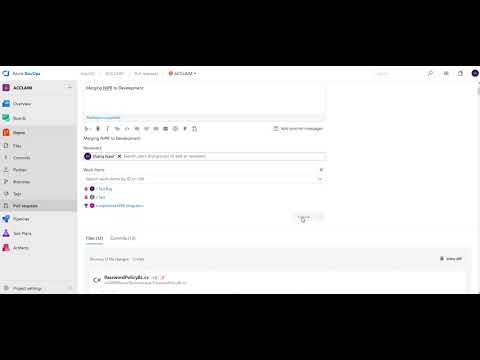
Found 43 images related to azure devops merge master into branch theme
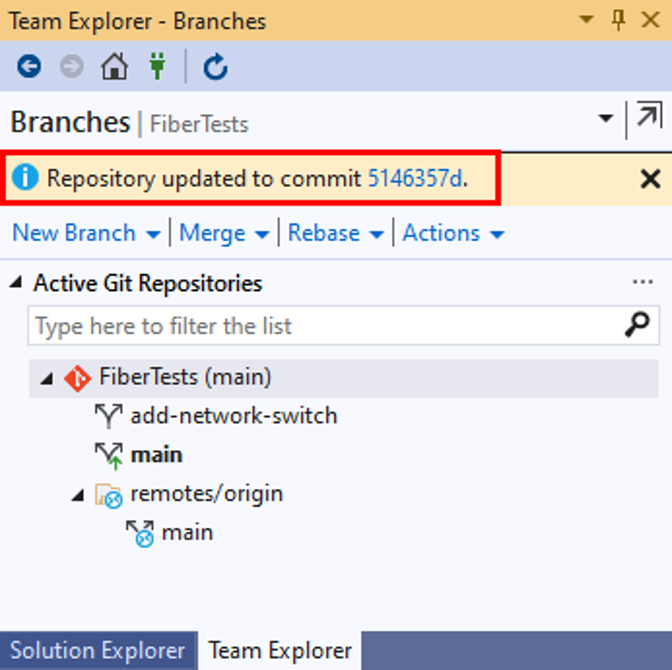


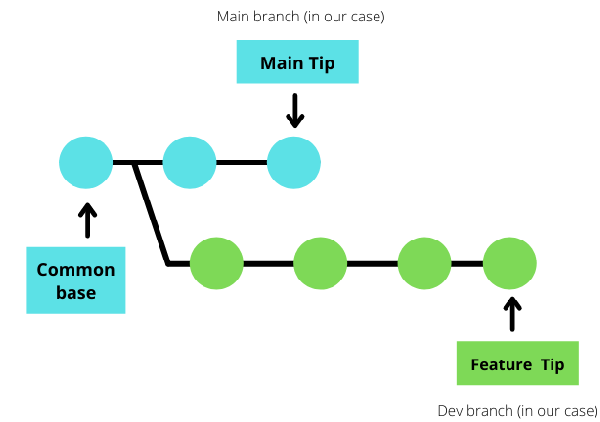


![Azure DevOps: How to resolve Git merge conflict [updated] – Munro Raymaker Azure Devops: How To Resolve Git Merge Conflict [Updated] – Munro Raymaker](https://munroraymakerdesign.files.wordpress.com/2018/10/2020-07-26-19_39_29-pull-request-1015_-changes-ammo-to-8-repos.jpg?w=501&h=319)


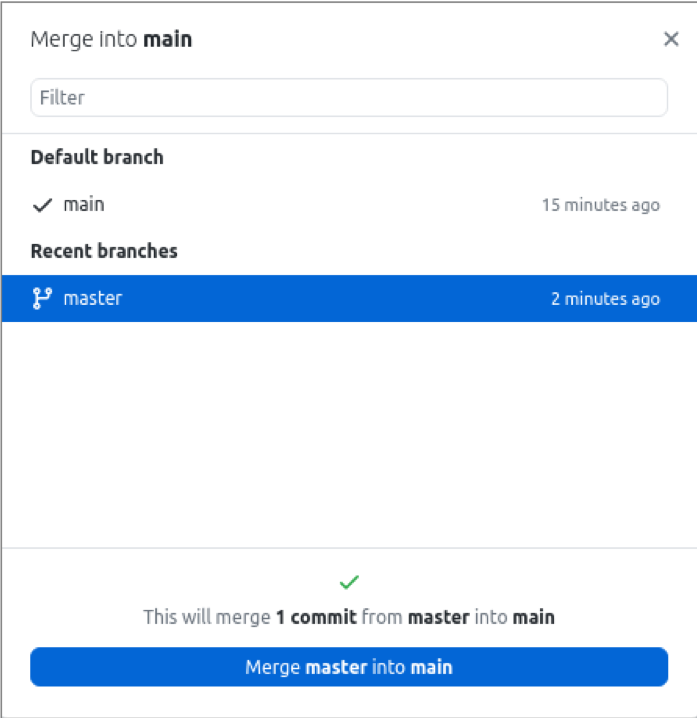


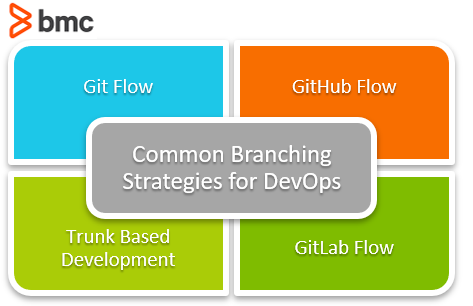

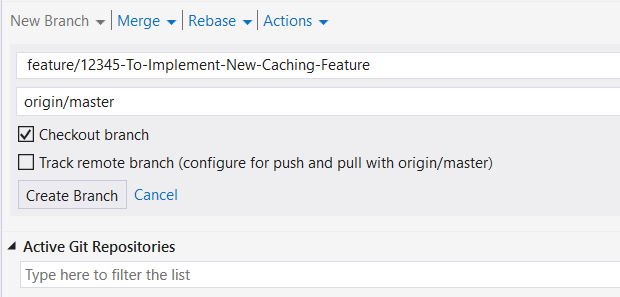




![Azure DevOps: How to resolve Git merge conflict [updated] – Munro Raymaker Azure Devops: How To Resolve Git Merge Conflict [Updated] – Munro Raymaker](https://munroraymakerdesign.files.wordpress.com/2018/10/merge.png?w=255&h=370)
Article link: azure devops merge master into branch.
Learn more about the topic azure devops merge master into branch.
- How do I merge current master branch into my branch visual …
- Git Merge Master into Branch {Two Methods Explained} – phoenixNAP
- Merge folders and files – Azure Repos – Microsoft Learn
- merge master branch into Azure Devops
- PartsUnlimited : Merge Code from Two Branches
- Azure DevOps – Tips and Tricks – 13 – How to merge two …
See more: https://nhanvietluanvan.com/luat-hoc